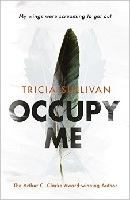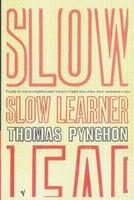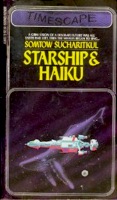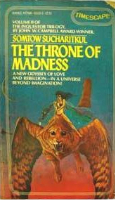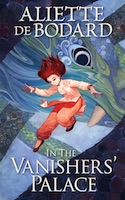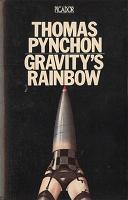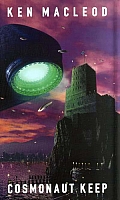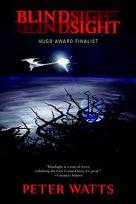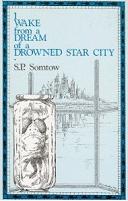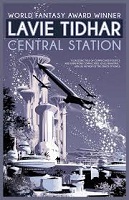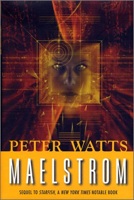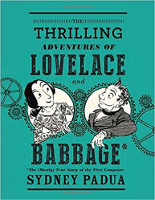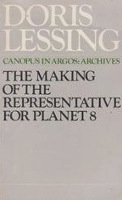 Do I need to introduce Doris Lessing? Ok, briefly, for those who don’t know - Lessing was born in 1919 in Persia, grew up in Rhodesia (both only exist in the History Books anymore - what’s this do to someone’s sense of origin and belonging?), and lived in London for most of her life, until her death last year. She has a substantial body of work to her name, and was awarded an equally substantial number and variety of Awards, including the Nobel Prize in Literature. A literary heavyweight, known for her books on a wide variety of topics, styles, and approaches; including the rather marvellous “Children of Violence” series, and this here, her most openly “Science Fiction” (or Space Fiction, as she called it) series called Canopus in Argos: Archives. She frequently defended her decision to use the form of Science Fiction for writing some of her stories against snooty and disparaging literary critics, calling them out on being narrow-minded, and focused on the form instead of the content and the quality...
Do I need to introduce Doris Lessing? Ok, briefly, for those who don’t know - Lessing was born in 1919 in Persia, grew up in Rhodesia (both only exist in the History Books anymore - what’s this do to someone’s sense of origin and belonging?), and lived in London for most of her life, until her death last year. She has a substantial body of work to her name, and was awarded an equally substantial number and variety of Awards, including the Nobel Prize in Literature. A literary heavyweight, known for her books on a wide variety of topics, styles, and approaches; including the rather marvellous “Children of Violence” series, and this here, her most openly “Science Fiction” (or Space Fiction, as she called it) series called Canopus in Argos: Archives. She frequently defended her decision to use the form of Science Fiction for writing some of her stories against snooty and disparaging literary critics, calling them out on being narrow-minded, and focused on the form instead of the content and the quality...
The Making of the Representative for Planet 8 (especially in this series she really went for rather long titles!) is the 4th book in the series. The series is mainly defined by being set in the same universe, and against the same back-drop of an interstellar civilisation (Canopus) who breeds, educates, uplifts other races and civilisations. Beyond this I think the individual books can very well be read out of sequence, or on their own - the reader might miss some background, some deeper understanding of the setting, but the book and the story it tells will work on its own.
The story of this rather slim volume ostensibly is relatively simple - it concerns a planet, only known as Planet 8 (it seems Canopus does not give all planets actual names), and the race of beings (in my mind they were humanoid, and rather human-like indeed) which live on and from it. Apparently the race was created from 4 others, with the aim of mixing it, after sufficient mental and societal advancement, with 2 other ones from the planet Rohanda (earlier books provide that this is Earth, or something very much like it) to achieve something new, special, a race able to raise to new levels.
And, on a side note, I always feel slightly queasy when such terms and approaches are applied to conscious beings, to humans. Yes, it’s logical against such a cosmic background. Yes, these would be different races. Yes, any breeding approach we use on animals could very well also be used for different races, or types of humans and genetically compatible humanoids. I guess what bothers me is the persistent, light whiff of Eugenics, and of the lovely people pushing these ideas, and of the uses they’ve been put to…
Anyway, things don’t go to plan for Canopus. The lovely Planet 8 is affected by cosmic forces, by movements of the stars as it is explained to its inhabitants, causing it to wither and die. Canopus instructs the inhabitants to build a huge wall, around the world, to hold back the cold, and especially the ice coming from the North. They also indicate that everyone will be taken off, and will be moved to Rohanda. Except, as we learn (and as is depicted in the first book of the series), Rohanda is also affected, and is now Shikasta the Broken. And so the move, so expected by everyone, does not materialise, and more and further measures and changes are required to enable the survival of the populace.
I will not spoil more of the story, or betray the meaning of the title - both the story, and the undertow which the protagonists are not aware of, are very much worth reading, and experiencing. The whole story is told in the 3rd person by a protagonist called Doeg (or that’s his name and role for most of the story). You see, names denote the role of an individual, and not the individual here. Doeg is a memory, history, storytelling, remembering role. And yes, we’re being told this story, in the 3rd person, and with very little reported direct speech: “You ask how the Canopean Agents seemed to us in the days of the Ice. This tale is our answer.”
The story itself switches back & forth between descriptions of actual activities (building the wall, trip to the Northern Pole, meetings and ceremonies), and long monologues with little actual exchange, normally with Johor, the main (and only named) Canopean agent. Of course, we learn, both modes are expressions/ opportunities for learning experiences for the protagonists.
One of the core themes in the book is the illusion of permanence - in individuals and their lives, in the works of civilisation, but also in the physical world - in the the long run everything is impermanent and transient! But feeling this, keeping this present in your daily live, your daily activities is not simple… it’s also visible in the questions of what makes us what we are, about our physical self, and how our experience of said physical self actually represents in the physical world:
“... and we had imagined how love and hate and the rest had howled and swept and pulsed about in the vast spaces that lie between the core of an atom (if anything that dissolves as you think of it may be termed a core) and the particles that surround it (if a vibration and a flow may be called a particle) …”
This is a story about being. About consciousness (and entirely different than the ones Peter Watts writes on the topic!). And with a very distinct take on the self, on names, and on identity.
There is an afterword in the book - originally it was planned for the 3rd book in the series (The Sirian Experiments), which was inspired by the author’s fascination with Scott’s Voyages, and what these say about the societal processes of the time.
But this is included with this book instead - not the least because the leap from Scott to a planet dying from cold/ice is so much easier to make, especially for those with a limited imagination and/or who are not familiar with the creative process (I paraphrase, badly, of course).
This story was also turned into an Opera by Philip Glass - and it appears, to the extents of my Google-Fu, that there is no record of this opera at all available, neither on the Interwebs nor off-line. Should you know of one, or (gasp!) be in possession of a recording then please let me know - I’d be much obliged.
More Doris Lessing
Title: The Making of the Representative for Planet 8
Series: Canopus in Argos: Archives
Series Number: 4
Author: Doris Lessing
Reviewer: Markus
Reviewer URL: http://thierstein.net
Publisher: Grafton
Publication Date: 1983
Review Date: 140917
ISBN:0586056548
Price: USD 7.95
Pages: 190
Format: Paperback
Topic: Space Fiction
Topic: Uplifting
